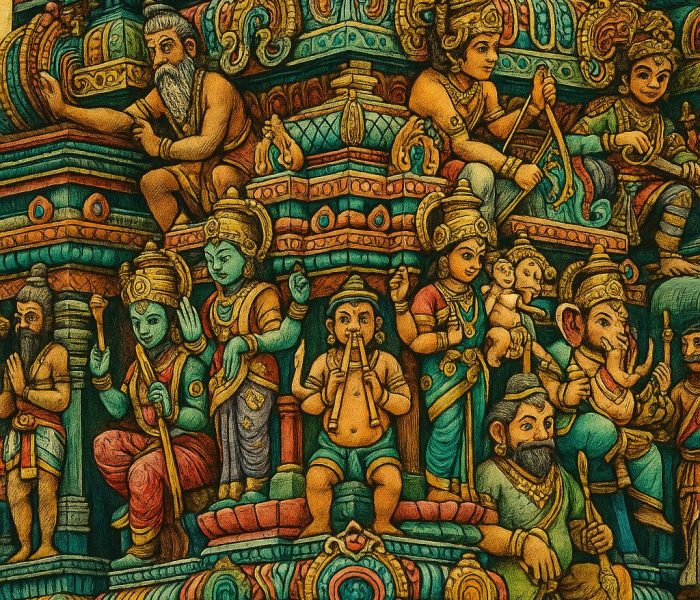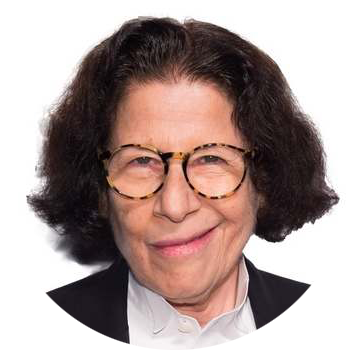In this article you will read about:
Introduction to the Purusharthas
Hinduism doesn’t just ask “What is the meaning of life?”—it hands you a structured answer.
That answer is the Purusharthas: the four core goals or aims of human life—dharma, artha, kama, and moksha. Together, they form a holistic life design framework that balances ethics, ambition, pleasure, and spiritual freedom.
For a modern seeker, the Purusharthas function like a four-part compass:
How do I live with integrity? (Dharma)
How do I create material stability and impact? (Artha)
How do I honor desire, joy, and connection? (Kama)
How do I move toward deep inner freedom? (Moksha)
This article unpacks each goal in clear language and shows how you can use them to design a balanced, purpose-driven life.
What Are the Purusharthas?
The Sanskrit term Purushartha, which combines purusha (person, self) and artha (purpose, aim), is usually translated as the “aims” or “goals” of human life.
Classical Hindu sources identify four Purusharthas:
Dharma – righteousness, moral values, right way of living
Artha – wealth, resources, material prosperity and security
Kama – pleasure, desire, love, and aesthetic enjoyment
Moksha – liberation, spiritual freedom, self-realization
These goals appear in Dharmaśāstra texts, the epics (Mahābhārata, Rāmāyaṇa), and later philosophical works as a framework for a balanced and meaningful life.
Importantly:
They are meant to be integrated, not pursued in isolation.
Traditional discussions often treat dharma as guiding artha and kama, while moksha is the ultimate horizon.
Dharma: The Foundation of Aligned Living
Dharma in this context means ethical alignment and right order—behaviours and choices that support harmony within yourself, in relationships, and in society. It includes duties, virtues, fairness, honesty, and living in a way that “fits” the deeper order of life.
Traditional texts repeatedly state that dharma comes first: without it, artha (wealth) and kama (pleasure) easily slide into chaos and harm.
For a modern seeker, dharma asks:
What are my core values?
What does right action look like in this role, at this time?
How do I pursue success and pleasure without betraying myself or harming others?
Dharma is the filter: it doesn’t kill ambition or joy; it frames them.
Artha: Material Stability, Resources, and Impact
Artha refers to the “means of life”: wealth, resources, professional success, and material security. It’s about having what you need to live, contribute, and support others.
Far from being anti-worldly, Hindu thought recognizes that ethical prosperity matters:
You can’t easily practice generosity, support a family, or pursue higher studies without some degree of material stability.
Classical texts (including Kautilya’s Arthaśāstra) argue that artha undergirds both dharma and kama—poverty can breed resentment and vice, while well-managed prosperity can support virtue and love.
From a psychological angle, artha aligns with:
Healthy ambition
Long-term planning and responsibility
Building a container (time, money, health) for your deeper work and service
The key is how you pursue it: artha guided by dharma builds; artha without dharma corrodes.
Kama: Pleasure, Desire, and Aesthetic Enjoyment
Kama is often flattened into “sensual pleasure,” but in classical sources it covers a wider range: desire, affection, enjoyment, emotional fulfillment, and aesthetic delight.Wikipedia+1
This includes:
Romantic and sexual love
Friendship, affection, and intimacy
Enjoyment of art, beauty, music, nature
The joy of being alive in a body
Rather than demonizing desire, the Purushartha framework says:
Pleasure is a valid human goal,
Provided it doesn’t violate dharma, trample others, or sabotage your path toward moksha.Wikipedia+1
In modern terms, kama invites you to:
Own your desires consciously instead of repressing or indulging blindly.
Make space for joy, play, and sensuality without losing your centre.
Integrate pleasure into a larger, value-aligned life.
Moksha: Spiritual Liberation and Deep Freedom
Moksha is the fourth and ultimate goal: liberation from saṃsāra, the cycle of birth, death, and rebirth, and realization of the true Self (Atman) as free and non-separate from ultimate reality (Brahman) in many schools.
Where the first three goals engage life’s:
Moral and social dimension (dharma)
Economic and practical dimension (artha)
Emotional and sensual dimension (kama)
Moksha opens an existential and spiritual dimension:
Freedom from compulsive attachment and aversion
Freedom from ignorance about who/what you really are
A stable sense of inner peace and clarity that doesn’t depend on circumstance
Psychologically, moksha resonates with:
Unhooking from limiting identities (“I am my status,” “I am my trauma”)
Living from a deeper, more spacious sense of Self
Experiencing life’s ups and downs without being entirely defined by them
Traditional texts often describe moksha as the parama-purushartha—the highest aim that ultimately gives context and depth to the other three.
Balancing the Four: Tension and Integration
Indian philosophers have long acknowledged the tension between:
Actively pursuing wealth and pleasure (artha & kama), and
Renouncing attachment in pursuit of liberation (moksha).
Several solutions emerge in the tradition:
Dharma as the regulator
Dharma steers how you pursue artha and kama so that they support, rather than obstruct, the path to moksha.
Nishkama karma – “action without craving”
Act fully in the world (job, family, creativity), but release obsessive attachment to results.
This “craving-free, dharma-driven action” is presented as a way to honour all four aims without losing yourself.
Stage sensitivity
Different life phases naturally emphasize different mixes of the goals (e.g., more artha and kama in youth and household life, more moksha focus later), even though all four remain relevant.
The message isn’t “pick only one.” It’s: learn to orchestrate them, with dharma as conductor and moksha as horizon.
Purusharthas as a Framework for Modern Well-Being
Contemporary scholars and educators increasingly present the Purusharthas as a framework for holistic well-being, integrating physical, emotional, social, and spiritual dimensions.
Viewed this way:
Dharma → values, ethics, meaning, pro-social behaviour
Artha → financial health, career development, sustainable security
Kama → emotional intimacy, joy, creativity, healthy pleasure
Moksha → deep self-understanding, inner freedom, spiritual growth
Psychologically, the Purusharthas help you:
Avoid one-sided living (only chasing success, only chasing pleasure, only escaping).
Map where your current life is overdeveloped (e.g., artha) and underfed (e.g., dharma or moksha).
Create a life design that honours both your humanity and your longing for something beyond it.
Micro-Practice: Designing Your Purushartha Snapshot
Use this as a quick reflection exercise (journal, notes app, or mind map):

Rate each goal (0–10) for your current life:
Dharma (alignment with values, integrity, right action)
Artha (material stability, work, resources)
Kama (joy, intimacy, pleasure, play)
Moksha (inner freedom, depth, spiritual practice)

Note your imbalances
Where are you overweighted? (e.g., artha 9, kama 2, moksha 1)
Where are you starving yourself?

Choose one 1% adjustment for each
Dharma: one action this week that reflects your core value (truth, compassion, responsibility).
Artha: one step toward healthier, more stable resources (budget tweak, skill upgrade, boundary at work).
Kama: one simple pleasure you allow yourself fully, without guilt and without harming anyone.
Moksha: one small daily practice (2–5 minutes of meditation, inquiry, or silence).
Conclusion
The **four goals of life in Hinduism—dharma, artha, kama, moksha—**offer a remarkably contemporary blueprint:
They honour your need for ethics, stability, pleasure, and transcendence.
They recognize the real tensions between them and offer tools for integration.
They invite you to live a life that is not only successful or comfortable, but also coherent, wholehearted, and oriented toward deep freedom.
For a modern seeker, the Purusharthas aren’t just historical curiosities. They’re an invitation:
to stop treating meaning, money, pleasure, and awakening as separate projects
and start weaving them into one evolving, intentional life.
FAQ
Most frequent questions and answers about the Four Goals of Life in Hinduism (Purusharthas)
The four goals, or Purusharthas, are:
Dharma – living in alignment with truth, ethics, and responsibility
Artha – creating material stability, resources, and impact
Kama – experiencing joy, love, and healthy pleasure
Moksha – realizing deep inner freedom and spiritual liberation
Together, they form a framework for a life that is not just successful, but meaningful and integrated.
Traditionally, dharma comes first, because it guides how you pursue both artha (wealth) and kama (pleasure). Moksha is often seen as the highest aim, the horizon that gives depth to the others. In real life, though, all four operate together. Different phases of life may emphasize them differently, but the goal is balance, not rigid sequencing.
No. The Purusharthas exist precisely to say: material well-being and pleasure are legitimate human aims. The key is how you pursue them:
Are you acting in line with dharma (ethics, integrity, non-harm)?
Are you remembering that moksha (inner freedom) matters more than status or instant gratification?
When artha and kama are guided by dharma and held within a wider spiritual context, they support, rather than block, your growth.
Common signs of imbalance include:
Strong artha but low kama → materially stable but numb, joyless, or disconnected.
Strong kama but weak dharma → high stimulation but guilt, chaos, or broken trust.
Strong dharma/artha but no moksha → responsible and successful, but chronically restless or spiritually empty.
A practical starting point is to rate each goal (0–10) in your current life and notice where you feel overextended or underfed—then make small, concrete adjustments.
You can work with them in simple, targeted ways:
Dharma: Take one decision today using your core value (e.g., truth, compassion, responsibility) as the main filter.
Artha: Do one action that supports long-term stability (saving, learning, boundary-setting at work).
Kama: Allow yourself one healthy pleasure—time with someone you love, creative play, rest, or beauty—without guilt.
Moksha: Spend a few minutes in meditation, reflection, or self-inquiry, connecting with something deeper than your to-do list.
Repeating small actions like these gradually reshapes your life around all four goals in a grounded, sustainable way.
Hinduism & Psychology Book Recommendations
Here is a collection of the best books on the market related to Hinduism & Psychology:
Our commitment to you
Our team takes pride in crafting informative and well-researched articles and resources for our readers.
We believe in making academic writing accessible and engaging for everyone, which is why we take great care in curating only the most reliable and verifiable sources of knowledge. By presenting complex concepts in a simplified and concise manner, we hope to make learning an enjoyable experience that can leave a lasting impact on our readers.
Additionally, we strive to make our articles visually appealing and aesthetically pleasing, using different design elements and techniques to enhance the reader’s experience. We firmly believe that the way in which information is presented can have a significant impact on how well it is understood and retained, and we take this responsibility seriously.
Click on the icon to see all your thoughts in the Dashboard.
Your Thoughts about the Purusharthas
It’s highly recommended that you jot down any ideas or reflections that come to mind regarding the Purusharthas, including related behaviours, emotions, situations, or other associations you may make. This way, you can refer back to them on your Dashboard or Reflect pop-ups, compare them with your current behaviours, and make any necessary adjustments to keep evolving. Learn more about this feature and how it can benefit you.
References
- Encyclopaedia Britannica. (n.d.). Moksha (Indian philosophy and religion). In Encyclopaedia Britannica.
- Encyclopaedia Britannica. (n.d.). Hinduism: Karma, samsara, and moksha. In Encyclopaedia Britannica.
- Exploring Purusharth: The four goals of Hindu life. (2023, February 4). Sociology Institute.
- Moksha. (n.d.). In Wikipedia. Retrieved 2025.
- Puruṣārtha. (n.d.). In Wikipedia. Retrieved 2025.
- Puruṣārtha. (2022, October 14). In Encyclopedia MDPI.
- Purusharth: Ancient and modern Indian goals. (2023). Journal of Research in Philosophical Studies, 18(1).
- Understanding the concept of Purusharthas: The four aims of human life. (2025, June 11). SimplyUPSC.
- Yoga-Vedanta Forest Academy. (2016, February 15). Dharma, Artha, Kama and Moksha: The four great goals of life. Sivananda Ashram.




